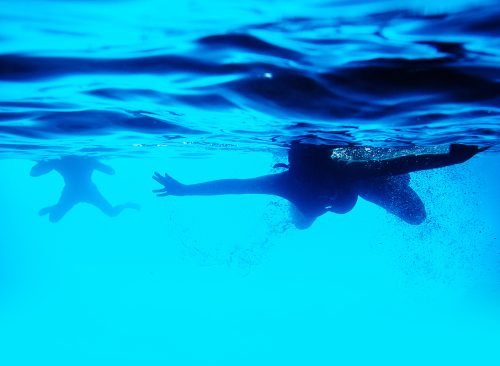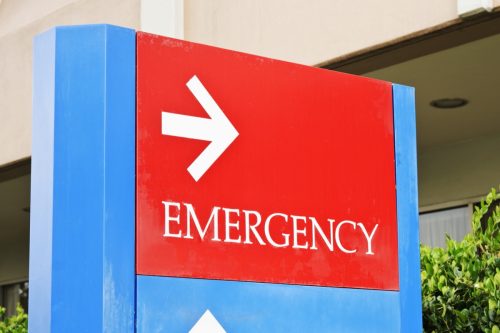Signs and Symptoms of Flesh-Eating Bacteria, as Cases in U.S. Rise
Before you take a swim or eat shellfish, read this.

According to officials in New York and Connecticut, at least three people have died after contracting infections from a rare flesh-eating bacteria, and five more have died in Florida. While rare, vibrio vulnificus, is a dangerous flesh-eating bacteria that can lead to amputations of limbs and even death. Here is what you need to know about the bacteria, including how to protect yourself and symptoms of infection.

“While rare, the vibrio bacteria has unfortunately made it to this region and can be extraordinarily dangerous,” New York Gov. Kathy Hochul (D) said in a news release Wednesday. “Five people in the Tampa, Florida, area have died from a rare flesh-eating bacteria, which is also the recent cause of death for three others in Connecticut and New York,” reports USA Today. “The Vibrio vulnificus bacteria, which can be found in raw or undercooked seafood, saltwater, and brackish water, led to the death of two people since January in Hillsborough County, home of Tampa, according to the Florida Department of Health. An additional person died in each of the surrounding Pasco, Polk and Sarasota counties. Florida has recorded a total of 26 cases statewide this year.”

One of the main ways infections are caused is by eating raw or undercooked oysters or other shellfish, according to the CDC.

Another method of infection is exposing open wounds to salt or brackish water. This can happen by swimming in warm saltwater or a mix of fresh and saltwater often found where rivers meet the sea. Anyone who has an open cut, scrape or open wound from a recent surgery, piercing or tattoo is a higher risk. “Living in Florida, being around the marine environment, we need to be aware of what it is,” Dr. Eric Shamas, an emergency medicine physician, told local station WESH 2.

Of those who have been infected, two Connecticut residents developed and died from the infection after they were swimming with open cuts in separate locations in the Connecticut waters of the Long Island Sound. One individual, who has been released from the hospital, was infected after eating oysters at an out-of-state restaurant.

According to the medical journal StatPearls Vibrio vulnificus is a bacteria that causes sepsis, severe wound infections and the stomach flu. It is usually found in saltwater coastal environments, with a higher incidence of infections between May and October when the weather is warmer. “Particularly during the hottest months of the summer, bacteria are more likely to overgrow and contaminate raw shellfish,” Manisha Juthani, Connecticut’s public health commissioner, said in a July 28 news release. “Given our current heat wave, this may be a time to exercise particular caution in what you consume.”

In order to survive an infection, many people infected with Vibrio vulnificus require intensive care or limb amputations to survive, explains the CDC. It can lead to necrotizing fasciitis, a severe infection in which the flesh around an open wound dies.

“About 1 in 5 people with this infection die, sometimes within a day or two of becoming ill,” the CDC said in its description of Vibrio vulnificus.

People with compromised immune systems are especially susceptible, including those with liver disease, cancer or a weakened immune system, as well as people taking medicine to decrease stomach acid levels.

Signs and symptoms of an infection include watery diarrhea that’s usually followed by a combination of stomach cramping, nausea, vomiting and fever, per the CDC. More serious symptoms that can occur when the infection is in the bloodstream include fever and chills, dangerously low blood pressure, and blistering skin lesions, health officials say. If you have an open-wound infection it would spread to the body resulting in swelling, warmth, discoloration and leaking fluids.

If you think you are infected, get medical treatment immediately. According to The Cleveland Clinic antibiotics such as doxycycline, ceftazidime, cefotaxime or ciprofloxacin are used to treat vibriosis. Surgical debridement, cleaning dead tissue out of a patient’s wounds, draining fluid from the blisters and intravenous fluids are other treatment methods.














